Saturday, December 10, 2011
1934-35 Montreal Maroons Cy Wentworth Jersey
The Montreal Wanderers hockey club was founded in 1903 and competed during hockey's formative years. They were the darlings of the English speaking population of Montreal and won their first Stanley Cup in March of 1906. Over the next three years the Wanderers won six Stanley Cup challenges and were the first National Hockey Association champions in 1910, which once again made them the holders of the Stanley Cup.
They subsequently defended the cup one final time before falling on hard times, making the playoffs once in the next eight seasons. In 1917-18 they became a charter member of the new National Hockey League, but when the Montreal Arena burned to the ground only six games into the first NHL season. the club folded for good.
The Montreal Arena Fire aftermath
Meanwhile, another club had been formed in Montreal back in 1909 as a charter member of the NHA in order to give the French speaking population of Montreal a team to call their own. The team, stocked with French-Canadian players, the Montreal Canadiens, took some time to develop into a contender and did not win their first Stanley Cup until 1916. They too, would join the NHL in 1917, but would not win another Stanley Cup until 1924, by now the only game in town following the demise of the Wanderers in 1918.
That would all change later in the calendar year, when a new expansion club would be formed, the Montreal Maroons, which would begin as intense a rivalry that the league as ever seen, as the Maroons were formed to specifically appeal to the English speaking fans of Montreal. While the Canadiens played at the Mount Royal Arena, a new home was constructed for the Maroons, the Montreal Forum. While the Canadiens objected to a second team being placed in Montreal, they were compensated by expansion fees and the Maroons came to be.
When they began life, the Montreal Professional Hockey Club had no nickname. Their original president, James Strachan, had been an owner of the Wanderers and attempted to revive the name, but the media eventually began calling the club the Maroons after the color of the team's sweaters.
The two clubs rivalry would begin prior to even the Maroons first game having been played, as the Canadiens would usurp the Maroons by playing the first game ever at the Maroons shiny, new arena, as the Canadiens home rink's natural ice surface was not yet playable so early in the season. Subsequently, the Canadiens game on November 29th, 1924 was relocated to the Forum by the NHL despite objections from both the Forum and the Maroons.
It would be on this date in 1924 that the Canadiens and the Maroons would first meet in a rivalry that would last 14 years. In that game, hosted by the defending Stanley Cup champion Canadiens at the Mount Royal Arena in from of 5,000 fans, was won by the francophones 5-0 over the anglophones behind by Aurel Joliat's four goals and goaltender Georges Vezina's ninth career shutout, both of whom were future Hall of Famers.
Aurel Joliat
The next meeting between the two clubs would come on December 27th at the Forum with 11,000 on hand, ending in a 1-1 draw, as would their next meeting on January 17th. The Canadiens would eventually dominate the season series with shutouts on January 31st, again by a score of 5-0, and on February 18th by a score of 1-0. The Maroons would drop the sixth game of the season series 3-1 on March 7th to finish the season at 0-4-2 versus their crosstown rivals in a series of games described at "mini-wars on ice" - and in the stands among the supporters!
For their first season, the Maroons wore simple maroon sweaters with a small block "Montreal" across the chest.
Clint Benedict
The Maroons would turn the tables in short order, as they would defeat the Club de hockey Canadien for the first time ever on December 3rd, 1925 in the Canadiens opening game of the 1925-26 season by a score of 3-2. Nels Stewart scored the first and third goals for the Maroons, both at 15:40 of the first and third periods. Punch Broadbent would register the other Maroons goal, while the great Howie Morenz opened the scoring for the Canadiens and Billy Boucher evened the score at 2-2 midway through the third period before Stewart's game winner.
Stewart would go on to win the Hart Trophy as the league MVP after leading the league in scoring with 42 points as the club would qualify for the playoffs following a second place finish. After defeating both the Pittsburgh Pirates and Ottawa Senators to win the NHL playoffs, the Maroons would put themselves on the map with a 3 games to 1 defeat of the Victoria Cougars to capture the Stanley Cup in only their second season of play, which would see the arrival of the large block "M" logo that would adorn their sweaters for the remainder of their time in the NHL.
1926 Hart Trophy winner Nels Stewart
The rivalry between the two clubs would reach a new level in 1926-27, as the Canadiens would become permanent tenants of the Forum. The rivalry would be ratcheted up even further as the pair would meet in the playoffs for the first time, won by the Canadiens in a two-game, total-goals series. Game 1 was a 1-1 draw, and the Canadiens prevailed with a goal by Morenz at 12:05 of overtime to give them a final 2 goals to 1 margin. Clint Benedict of the Maroons would lead all goaltenders that season with a 1.42 goals against average yet the Canadiens George Hainsworth would win the Vezina Trophy while Herb Gardiner of the Canadiens would win the Hart Trophy.
1927 Hart Trophy winner Herb Gardiner
The teams would finish 1-2 in the Canadian Division in 1927-28 and face each other again in the playoffs when the Maroons advance to the semifinals after defeating Ottawa. In a mirror image of their first meeting, the opening game was a 2-2 tie followed by a 1-0 win, this time for the Maroons, at 8:20 of overtime on a goal by Russell Oatman. The Maroons would eventually fall in the fifth and final game of the cup finals. The Canadiens Morenz would win the Hart Trophy that season.
1928 Hart Trophy winner Howie Morenz
Hainsworth would win a well-earned Vezina Trophy for the Canadiens in 1928-29 thanks to a staggering 22 shutouts in 44 games.
The Maroons took the Canadian Division on a tie breaker in 1929-30, having won 23 games versus the Canadiens 21, as both teams tied with 51 points. They did not meet in the playoffs, as the Canadiens went on to win the Stanley Cup following an undefeated playoff run. Meanwhile, the Maroons' Stewart would win his second Hart Trophy that season.
The 1930 Stanley Cup champion Montreal Canadiens
Both teams again qualified for the playoffs in 1930-31 after the Canadiens won the division while the Maroons came third. The Maroons were blown out by the Rangers in Round 1 8 goals to 1. Meanwhile the Canadiens ousted the American Division champion Boston Bruins 3 goals to 2 and then won their second consecutive Stanley Cup by defeating the Chicago Black Hawks 3 games to 2, with every goal being decided by a goal and two games going to overtime, one double overtime and the other triple overtime, in likely the closest Stanley Cup Final series ever. The Canadiens' Morenz won the league scoring race with 49 points, 17 clear of second place, to win another Hart Trophy, which he would capture once again in 1931-32.
The 1931 Stanley Cup champion Montreal Canadiens
The 1932-33 season saw Baldy Northcott, Hooley Smith and Paul Haynes of the Maroons finish 3-4-5 in league scoring.
Russ Blinco was the NHL Rookie of the Year in 1933-34 for the Maroons while Joliat took home the Hart Trophy for the Canadiens.
The 1934-35 season would see the Maroons edge the Chicago Black Hawks after a 0-0 tie in Game 1 and an overtime winner in a 1-0 total goals series. After defeating the Rangers 2-1 and advancing after a 3-3 draw, the Maroons swept the Toronto Maple Leafs in their best of three final series to capture their second Stanley Cup after their undefeated playoff run (5-0-2).
The 1935 Stanley Cup champion Montreal Maroons
With the Great Depression in full effect, both Montreal clubs were having great difficulty drawing fans, with the Maroons particularly hurt due to the smaller anglophone fanbase in Montreal. The rest of the league was also suffering great difficulties, as the league shrank from 10 clubs in 1931 to 8 in 1935. Still, the Maroons would go on to win the Canadian Division once again in 1935-36. Later during that season's playoffs, the Maroons would battle the Detroit Red Wings in what remains the longest game in NHL history, a 6 overtime loss on March 24, 1936.
The Canadiens would edge the Maroons for the division title in 1936-37 by a single point, as the financially struggling Maroons began to sell of their better players, with team captain and franchise all-time leading scorer Smith departing for Boston. In contrast, the Canadiens' Babe Siebert was the Hart Trophy winner for the season.
1927 Hart Trophy winner Babe Siebert
The Maroons final season would come in 1937-38, but before it would begin, the two rival clubs would come together like never before. Following the premature death of the Canadiens' Morenz, the second all-star game in league history would be held as a benefit for the Morenz family, in which a team made up of both Canadiens and Maroons would face an all-star squad made up of members of the rest of the league's clubs. The All-Stars would win the game by a score of 6-5.
The Maroons and Canadiens team photo
from the 1937 Howie Morenz Benefit Game
The Maroons endured a coaching change on their way to a last place finish in the league with a 12-30-6 record. After suffering with the lowest attendance in the league for three seasons in a row, the final Maroons game was played against the Canadiens on March 17, 1938, a 6-3 win for the Canadiens. The series between the two clubs featured intense battles both on the ice, as well as between the rival groups of supporters. While both teams would win a pair of Stanley Cups during the Maroon's 14 year history, the series would eventually end in favor of the Canadiens at 40-35-17, with the Canadiens posting 18 shutouts against the rival Maroons.
The Maroons hold the distinction of being the last Canadian club added to the NHL until 1970 with the arrival of the Vancouver Canucks. They are also the last team to have won the Stanley Cup and then later ceased operations and also the last non-Original 6 team to win the Stanley Cup until the 1974 Philadelphia Flyers.
Following the demise of the Maroons, the anglophones of Montreal were left with two options, become fans of the local Canadiens, or switch their allegiance to the Toronto Maple Leafs, who hailed from English Canada.
Today's featured jersey is a 1934-35 Montreal Maroons Cy Wentworth jersey from the Maroons second Stanley Cup winning season. The Maroons played in an era when teams did not necessarily have home and road sweaters, and if they did possess a white sweater, it was only worn on occasions when their dark sweaters were too similar to their opponents dark sweaters, such as the Maple Leafs wearing white when facing the blue-clad Rangers.
With the Maroons color being unique to the league, they never saw the need for an alternate design and stuck with just dark sweaters for their entire existence.
Labels:
Montreal Canadiens,
Montreal Maroons
Subscribe to:
Post Comments (Atom)

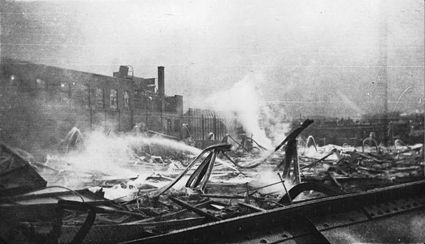
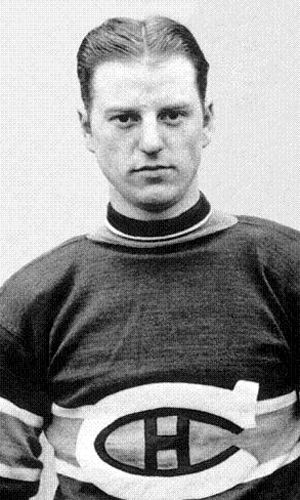
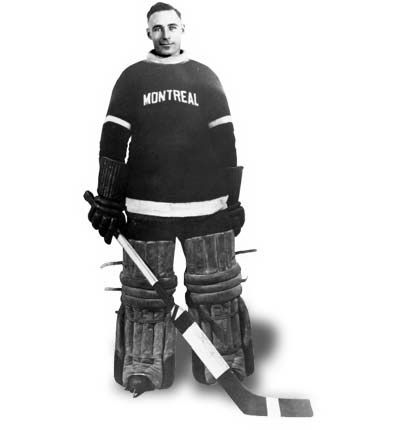
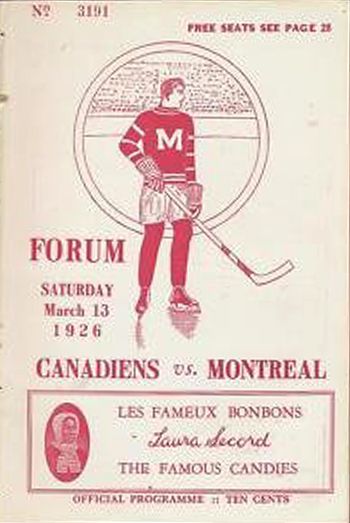
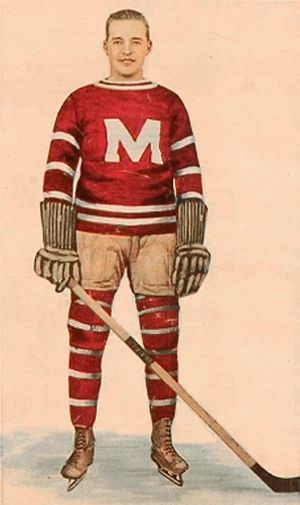
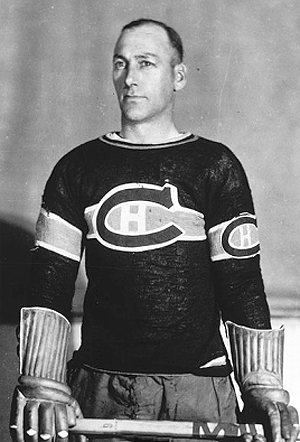
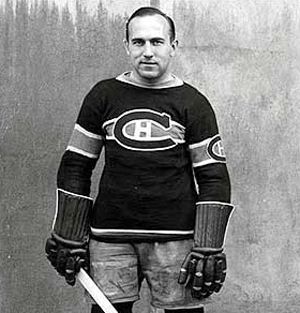
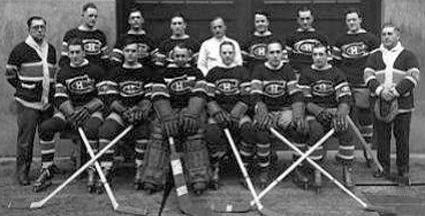
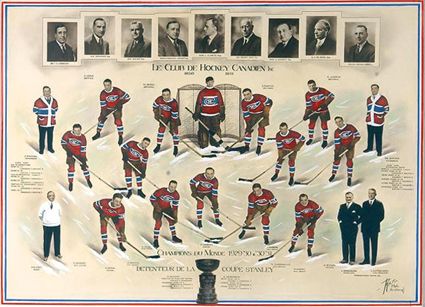
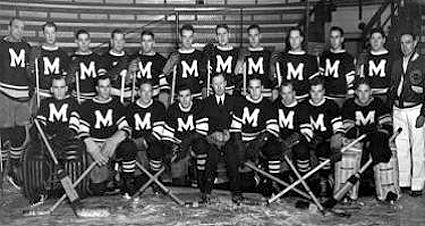
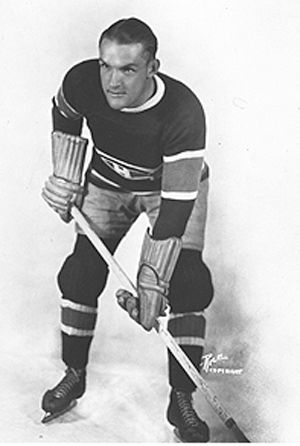
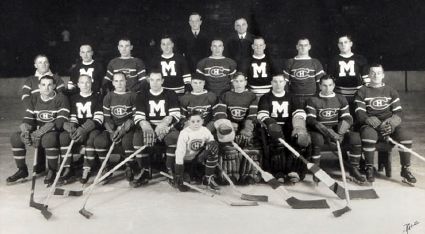
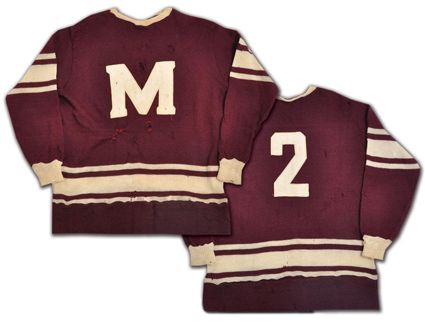










No comments:
Post a Comment
We welcome and encourage genuine comments and corrections from our readers. Please no spam. It will not be approved and never seen.